|
Glaucophane |
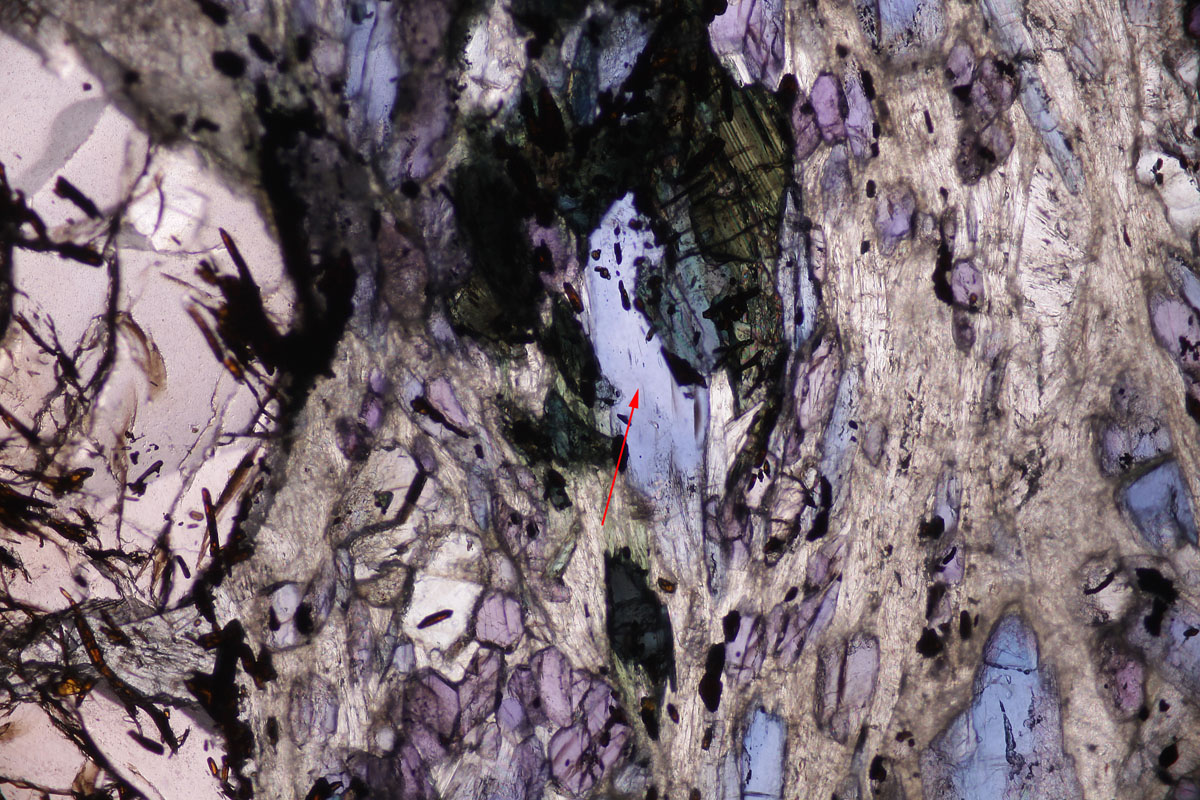 |
|
The Glaucophane is also highly pleochroic as
can be seen on this thick section. The Raman spectrum has been recorded
on the blue crystal shown by the arrow. See also
absorption
spectrum of Glaucophane. |
|
|
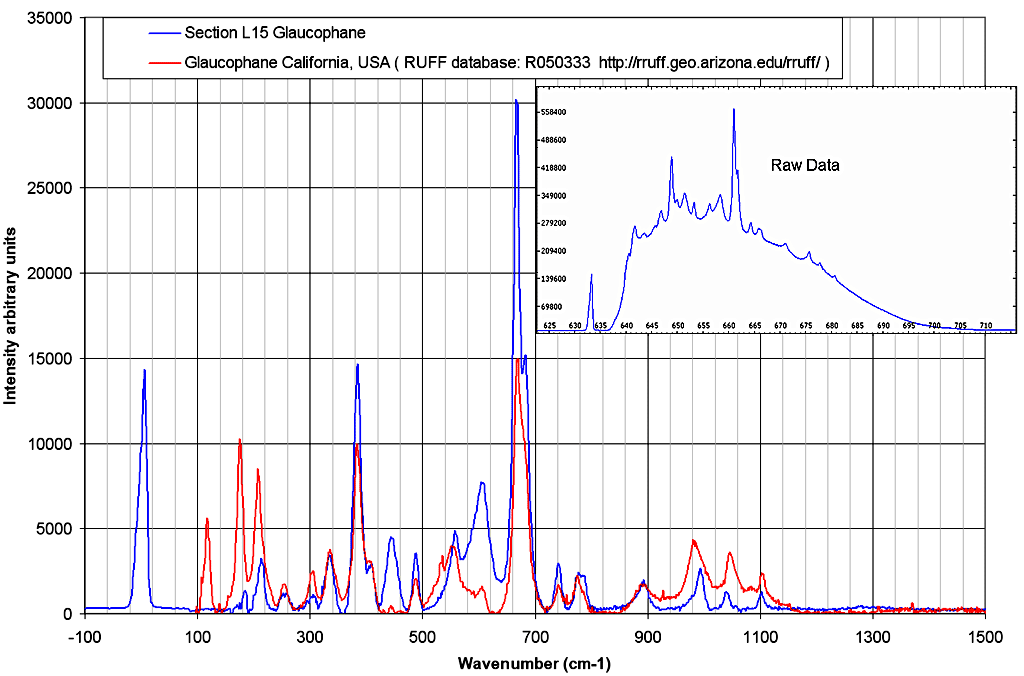 |
| The Raman spectrum obtained with our
Raman microscope can
be compared with a reference spectrum. |
| |
| Rutile |
 |
|
To test the possibility of the present instrument to identify small
crystals in a section, I have chosen this big Garnet crystal with small
inclusions which seem to be Rutile. The
photograph below has been taken with a polarizer and analyzer nearly
crossed and with higher magnification to give a better view of the
inclusions. |
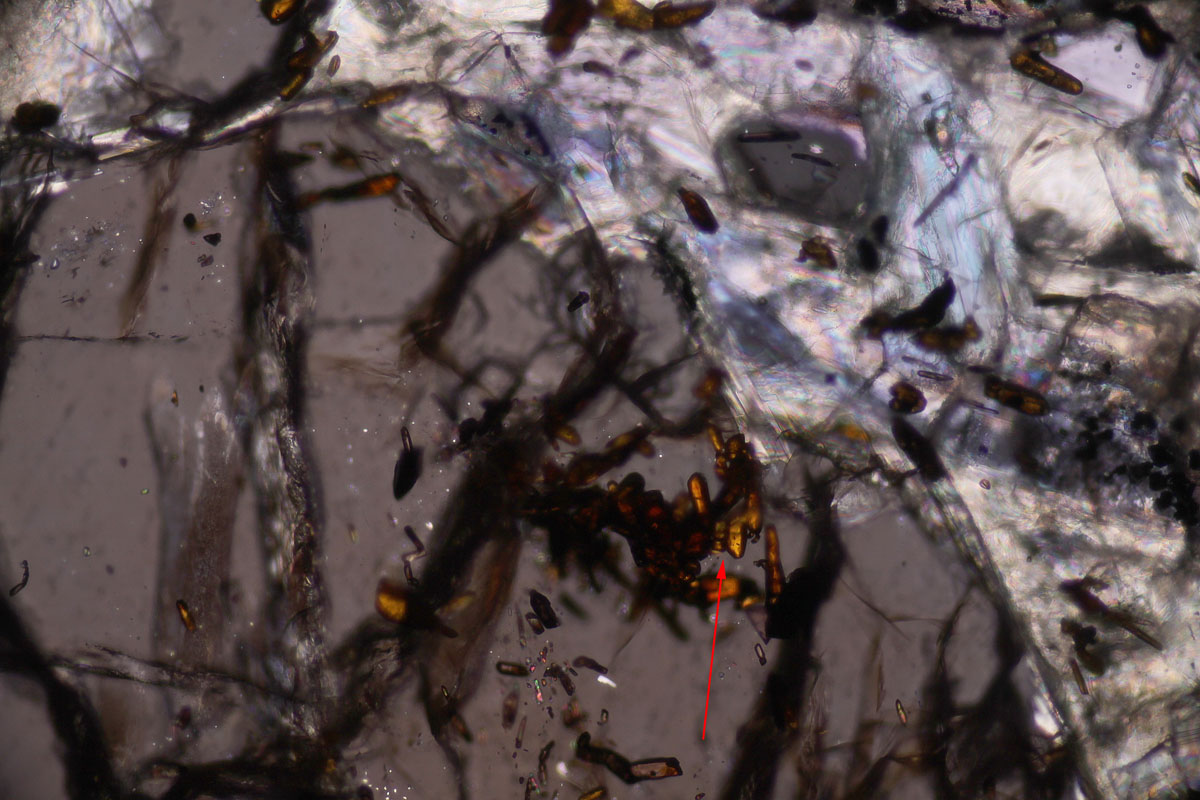 |
|
Details of the small inclusions. |
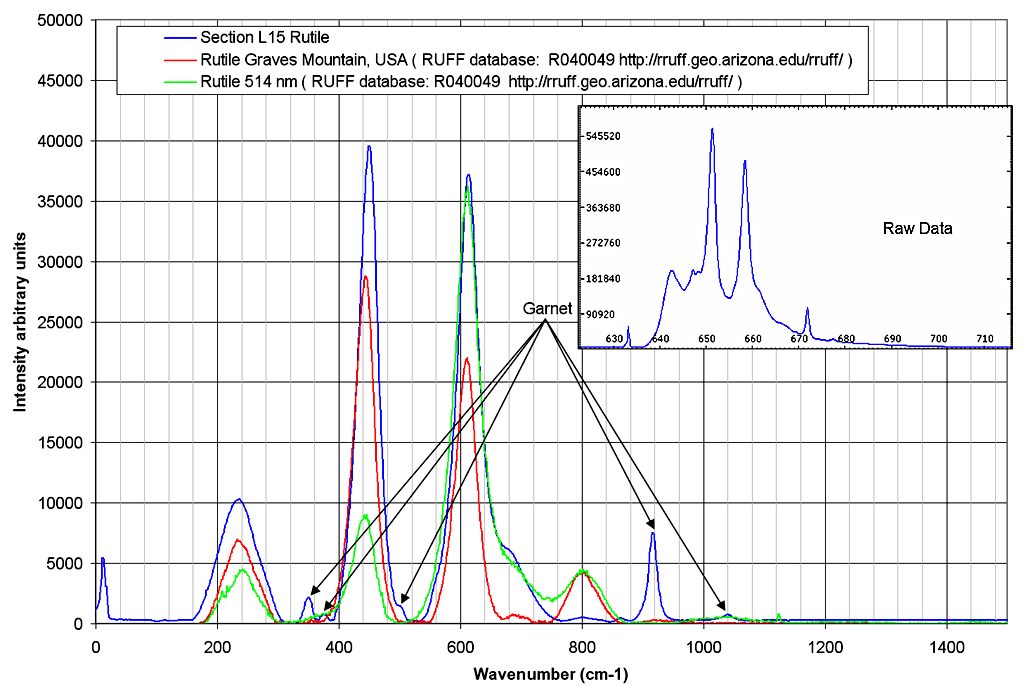 |
| The Raman spectrum of the inclusions shown on
the two pictures above confirms the nature of these small crystals to be
Rutile. The spectrum obtained is not a pure Rutile spectrum, some Garnet
peaks remain due to the small size of the Rutile particles. This is
probably due to the lack of spatial resolution of this instrument in a direction
parallel to the laser beam. |
| |
| Quartz
in Garnet |
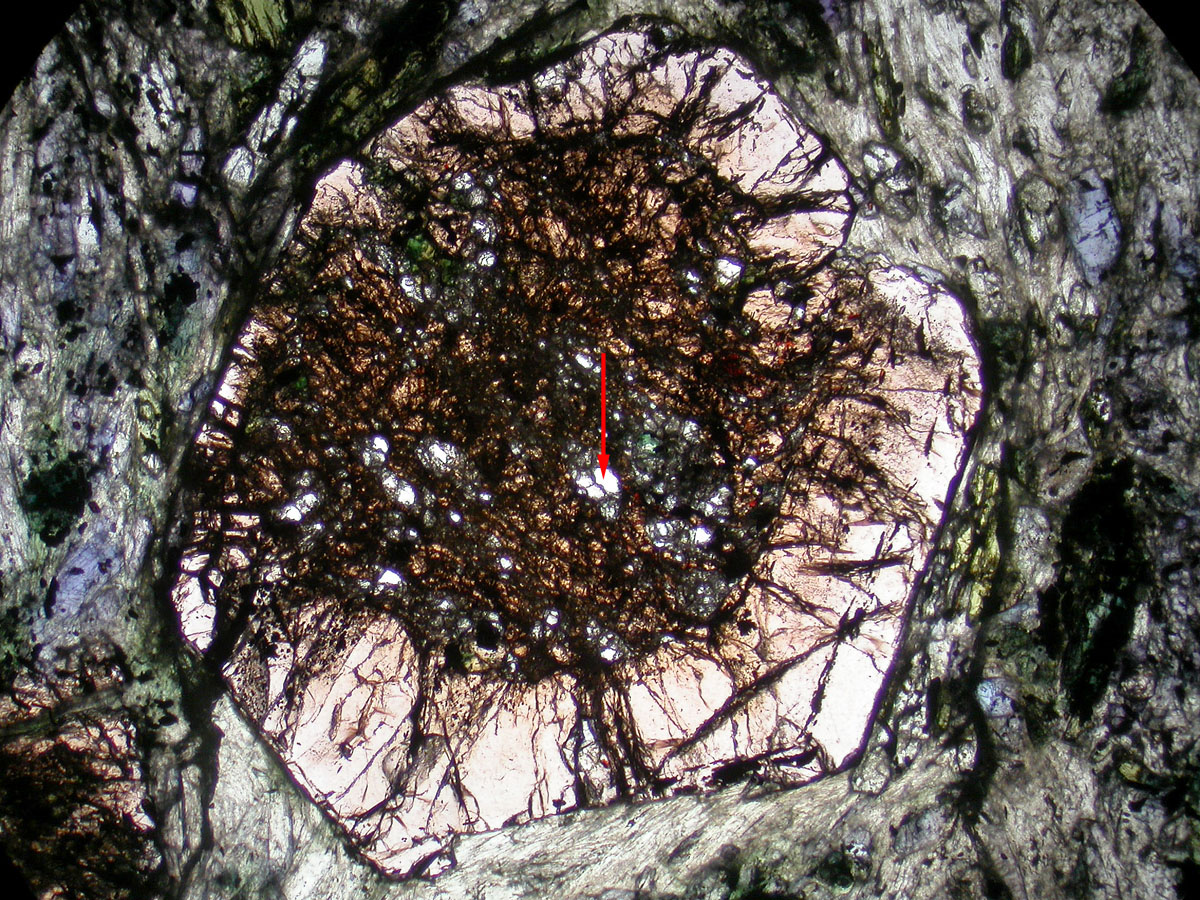 |
|
Another inclusion in the Garnets is shown in the
picture above. In this case, the section is sufficiently thin to allows the
laser beam to cross the section without touching the Garnet material. |
|
|
 |
| The Raman spectrum of this inclusion is evidently
Quartz. |
| |
|
Apatite |
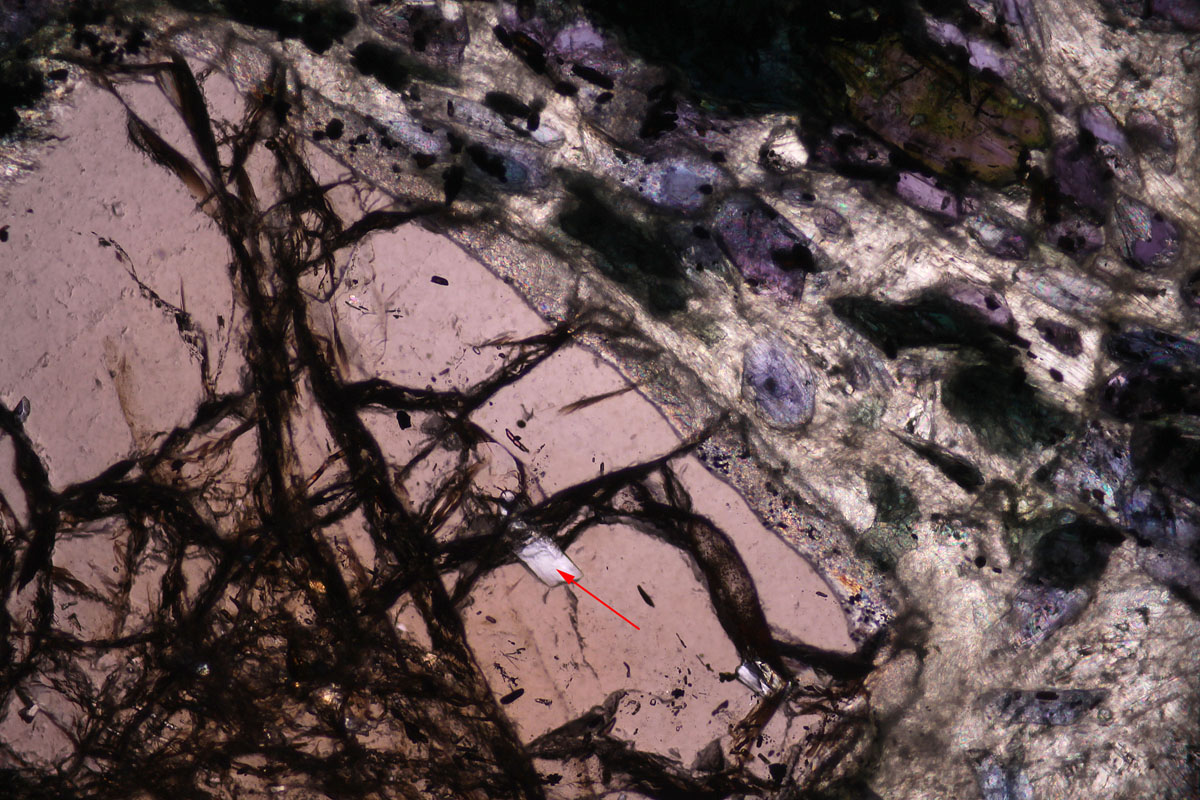 |
| Another inclusion in Garnet which seems to be thinner
than the section has also be measured (red arrow). |
| |
 |
|
The spectrum of this inclusion is evidently dominated
by the garnet material. The additional peaks present in the
spectrum (black arrows) have been identified as Apatite, a finding also
compatible with the low birefringence of this crystal. |








